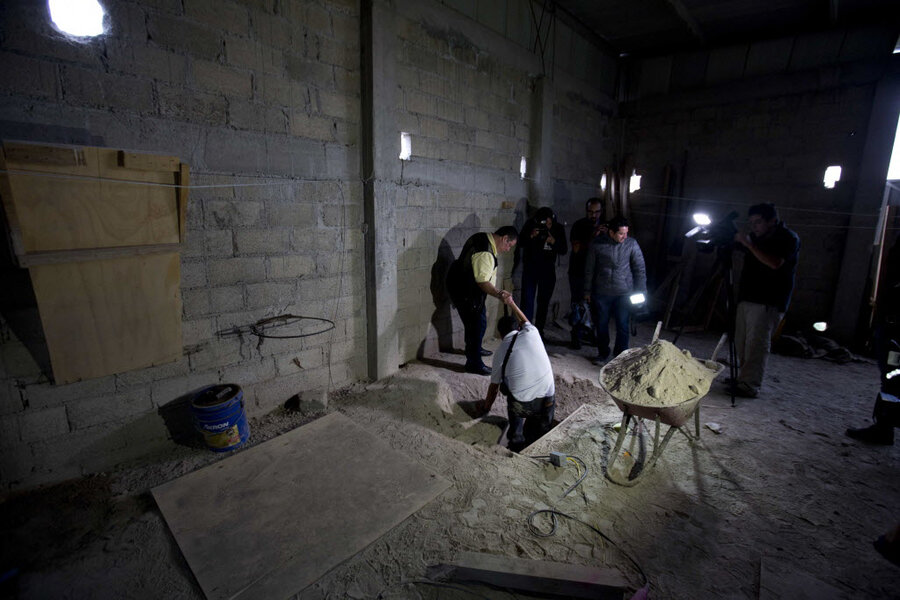Inside El Chapo's tunnel: How Mexico's most-wanted man escaped
Loading...
Four days after Mexico’s most dangerous drug lord made his second escape from prison, officials have pieced together the details of his getaway and allowed journalists to explore the scene of the crime.
The July 11 escape of Joaquín “El Chapo” Guzmán from a maximum security prison in central Mexico was elaborate, to say the least. But what else could you expect from a man who has been named both one of the richest men in the world by Forbes and “public enemy number one” by the city of Chicago?
Government video of Guzman’s final moments in his cell show him pacing around the 60-square-foot area, circling around to the shower, latrine, and bed. Such pacing isn’t considered unusual for a prisoner living in such confined quarters with only an hour outside a day for exercise, Mexico's security commissioner Monte Alejandro Rubido told reporters.
So it was all the more shocking when the inmate known as “El Chapo” lifted a slab of concrete shower floor and disappeared from one of the only spots in his cell that surveillance cameras didn’t cover.
Hidden underneath his shower was a secret tunnel, built to perfectly accommodate his diminutive 5’6” frame, where a motorcycle rigged to two carts on rails waited to carry him to freedom. Guzman either rode on the bike or in one of the carts for a mile before reaching a 17-rung ladder, which he climbed up through a large, wood-framed shaft with a winch overhead that had been used to drop construction supplies into the tunnel.
This brought him to a small basement room containing a power generator the size of a small car, used to illuminate and pump oxygen into the tunnel. From there, he ascended a much shorter ladder and emerged above ground inside an unfinished bodega full of construction supplies, built especially to mask the scheme.
It was a far cry from Guzman’s 2001 escape, in which he bribed guards and employees to smuggle him out of prison. After his recapture in February 2014, the Mexican government said he could not possibly repeat his escape – and they were partially right.
Such an elaborate tunnel would normally take 18 months to two years to complete, according to Jim Dinkins, former head of Immigration and Customs Enforcement's Homeland Security Investigations. Guzman had been imprisoned barely 16 months.
"When it's for the boss, you probably put that on high speed," Dinkins said.
This report includes materials from the Associated Press.






